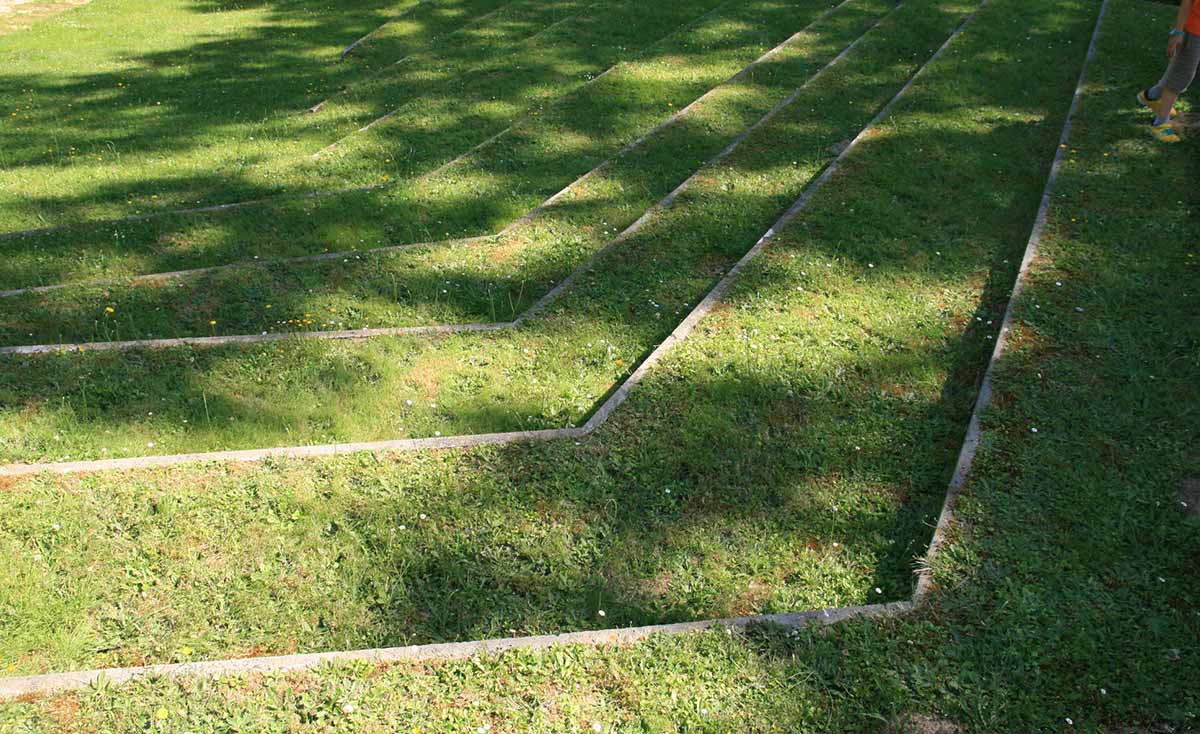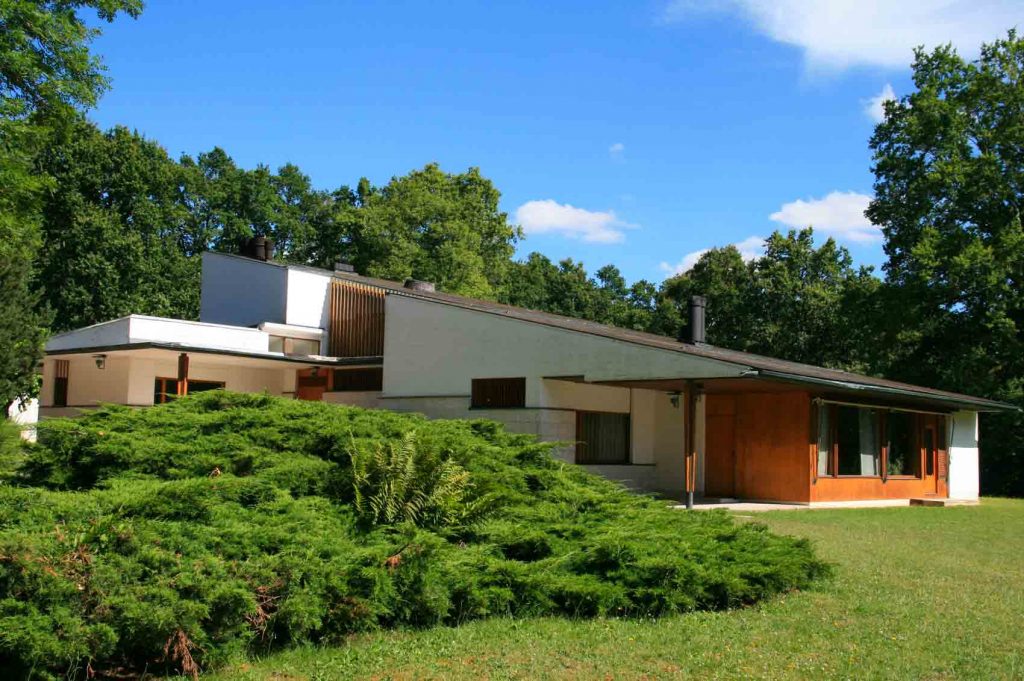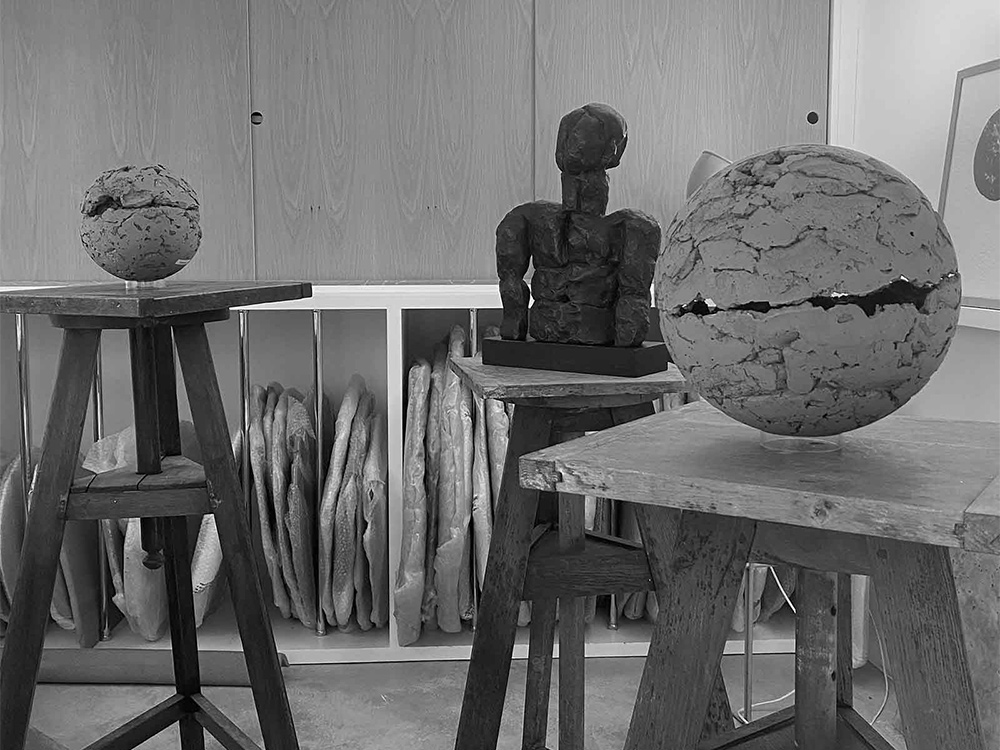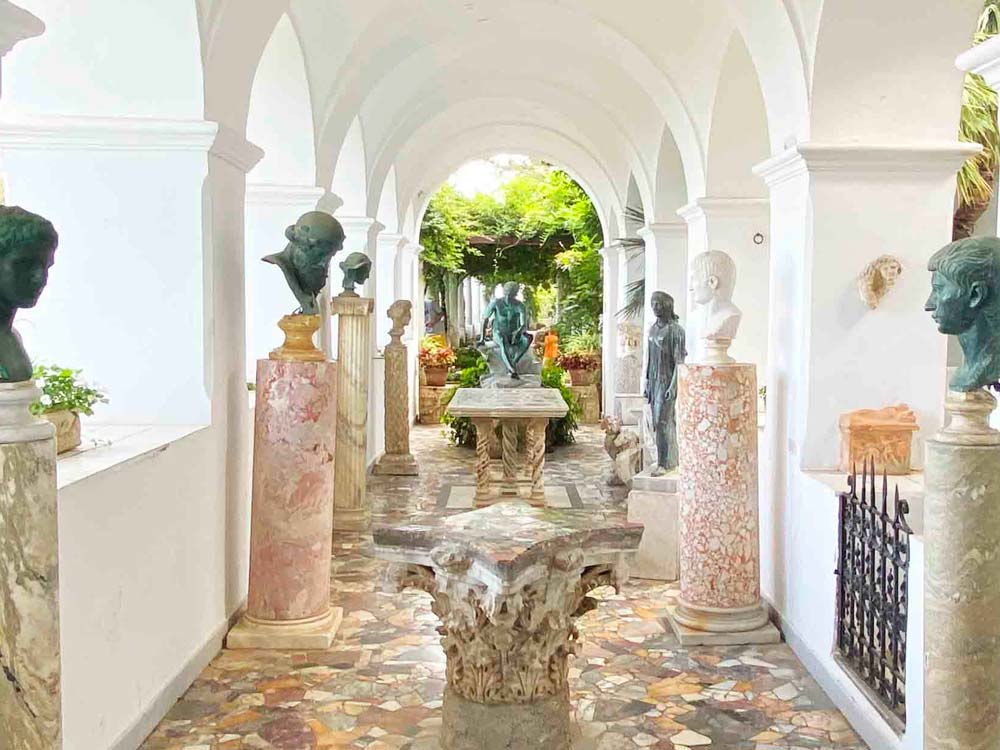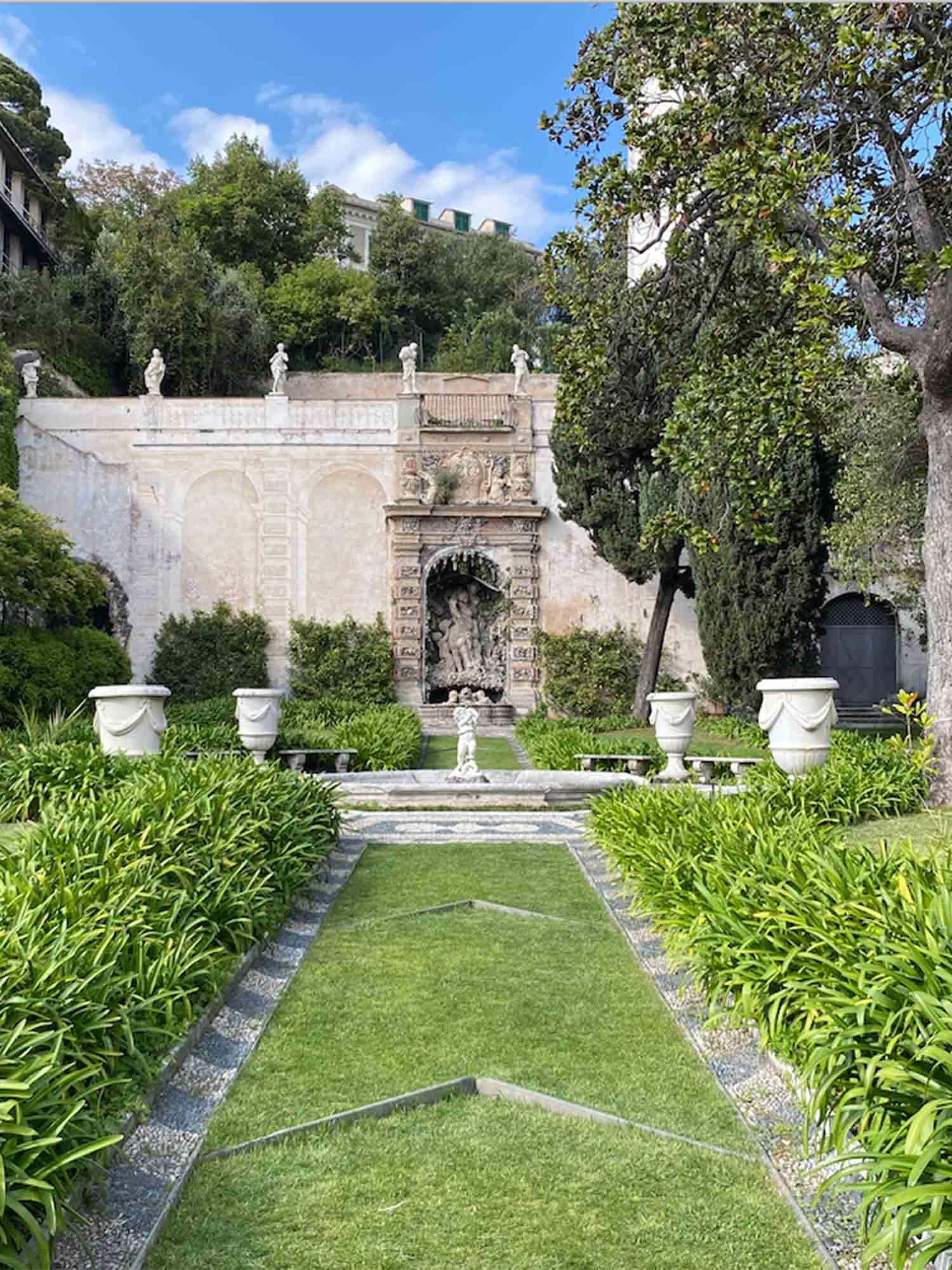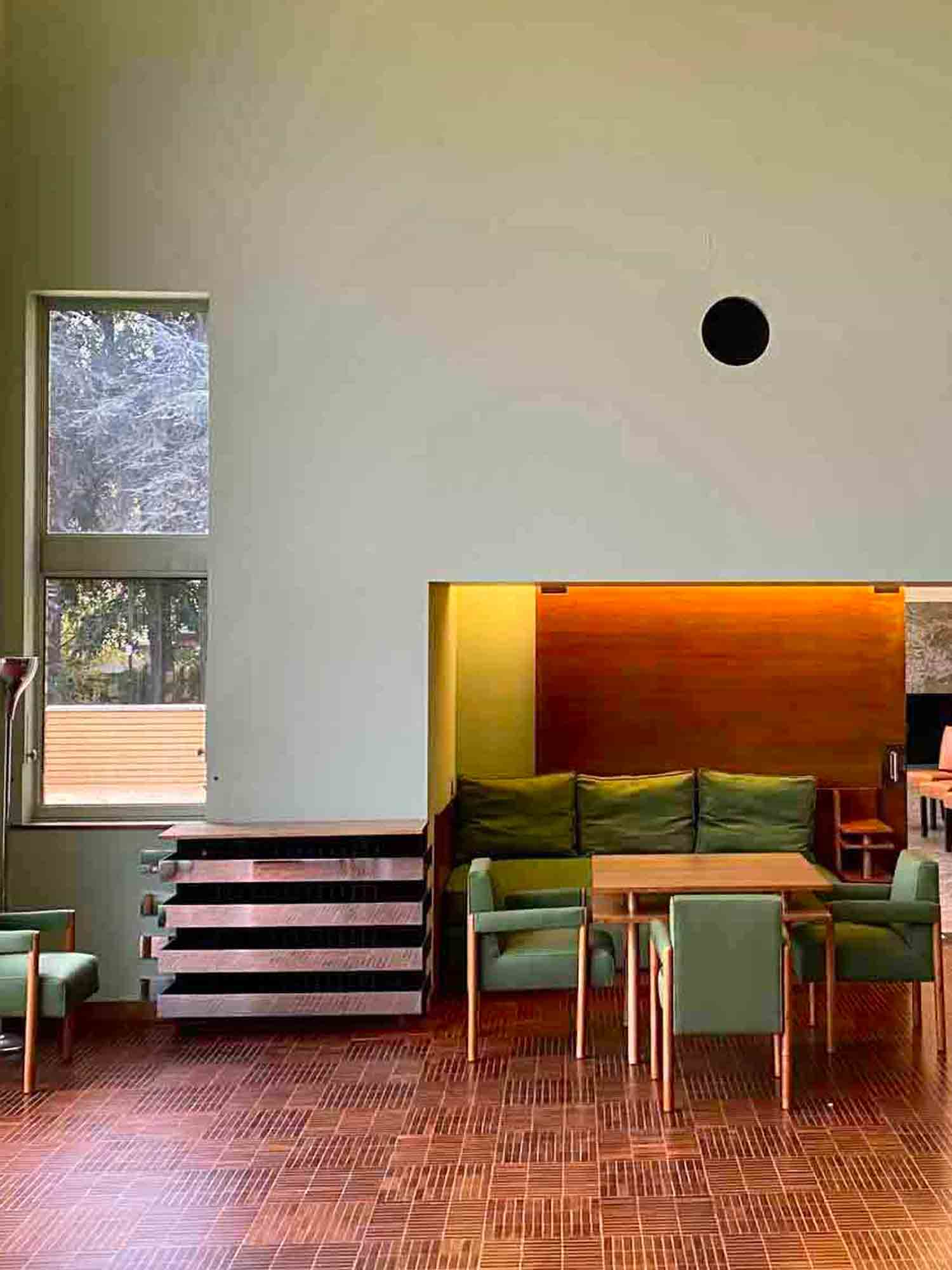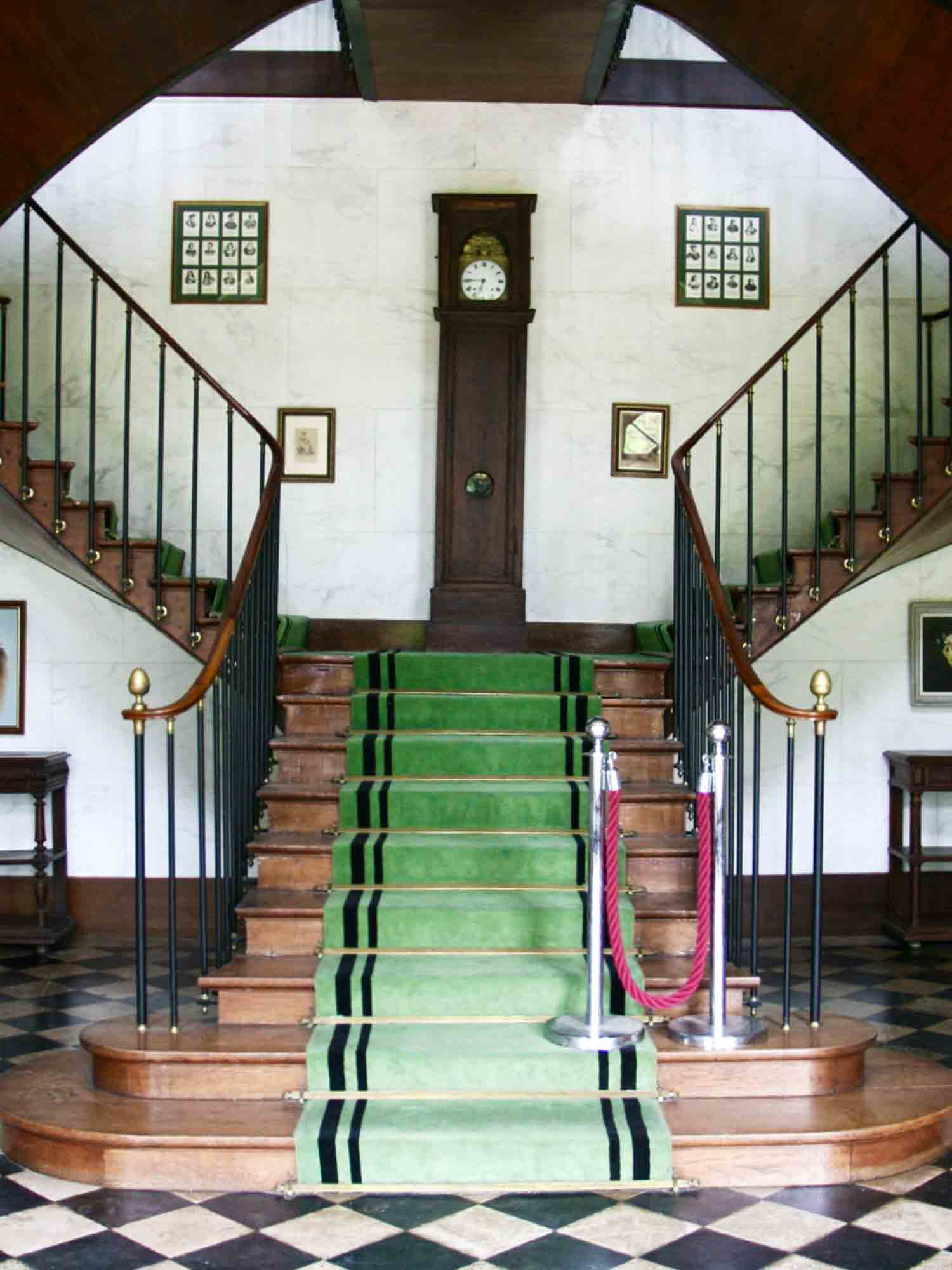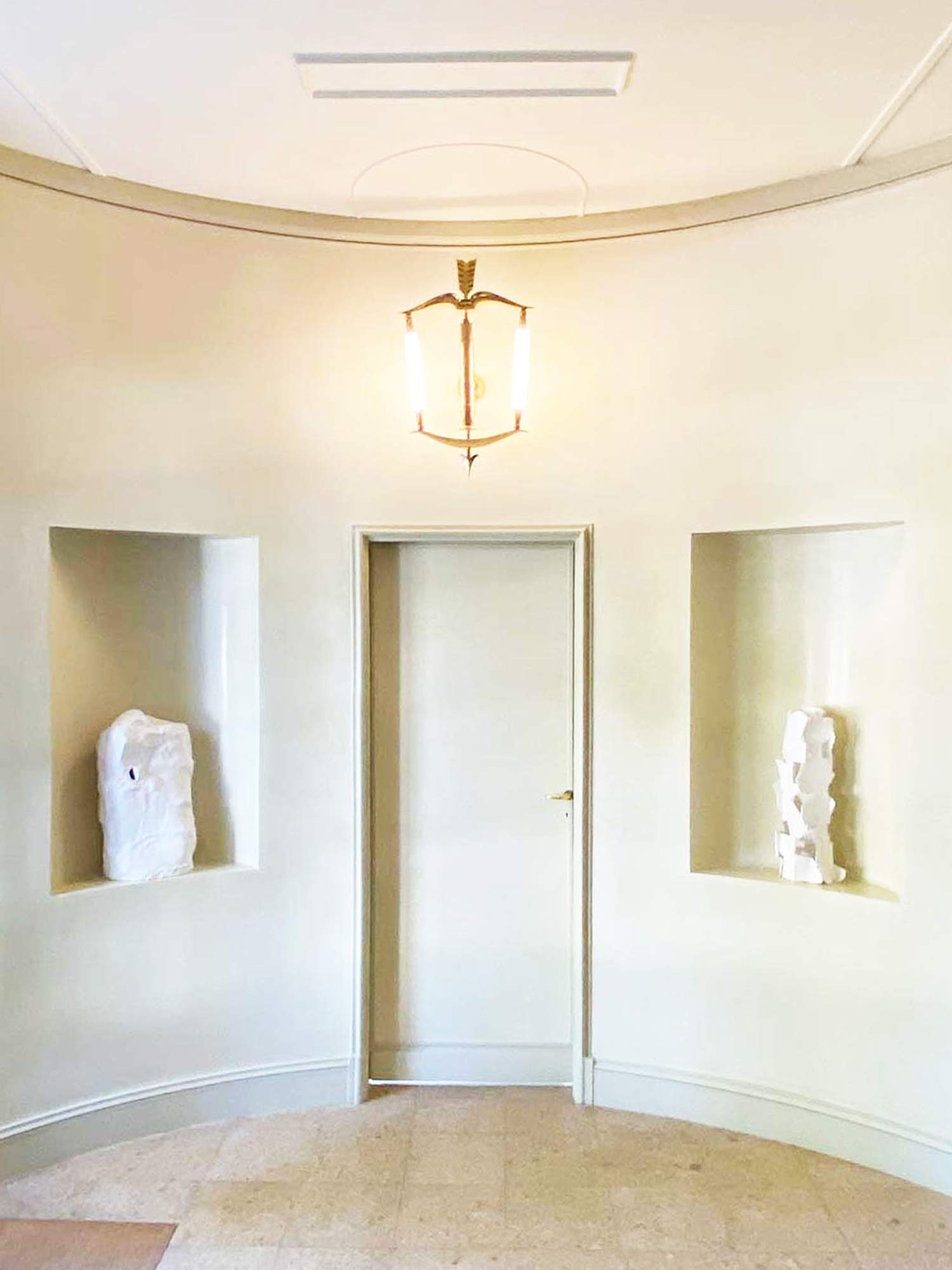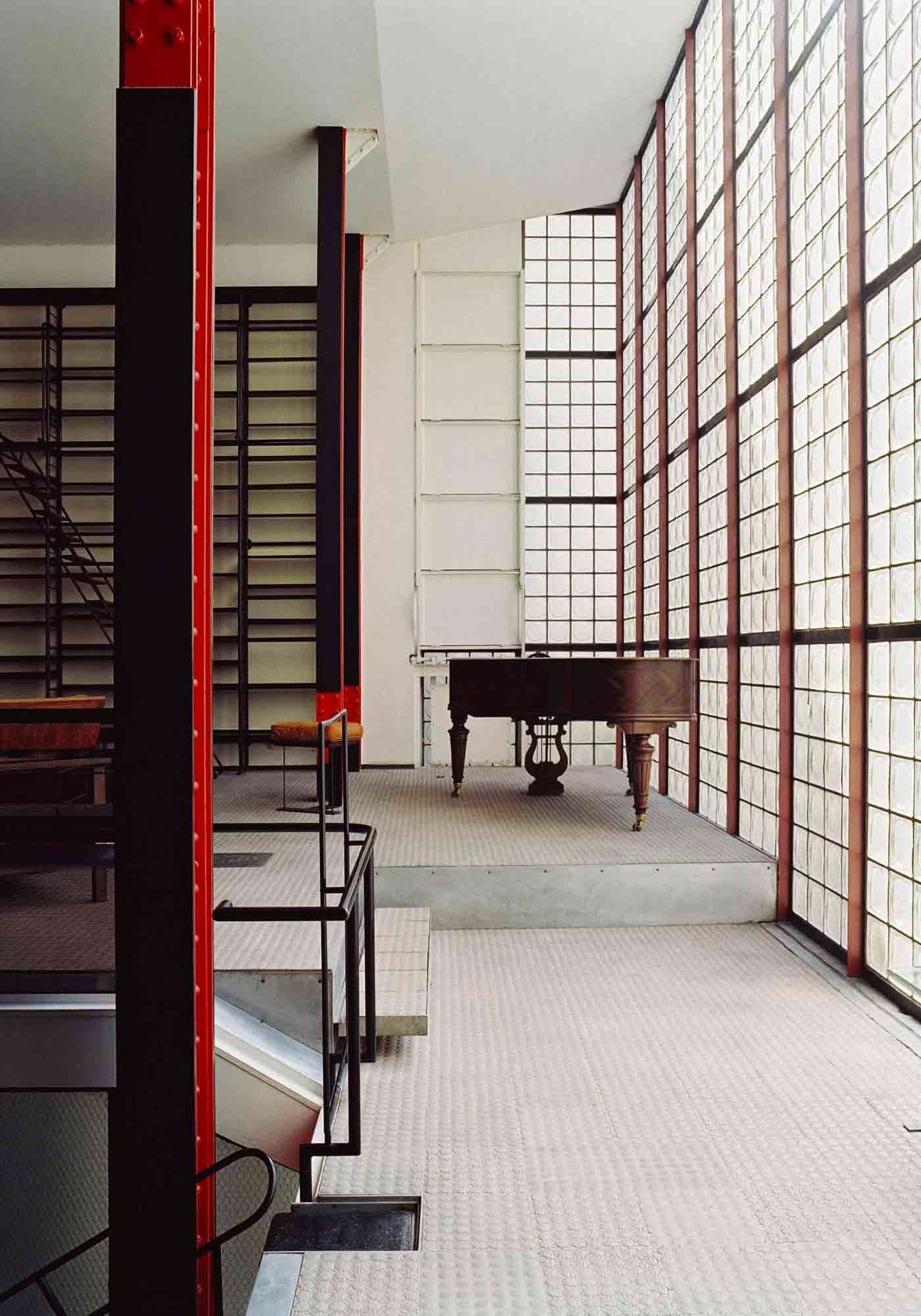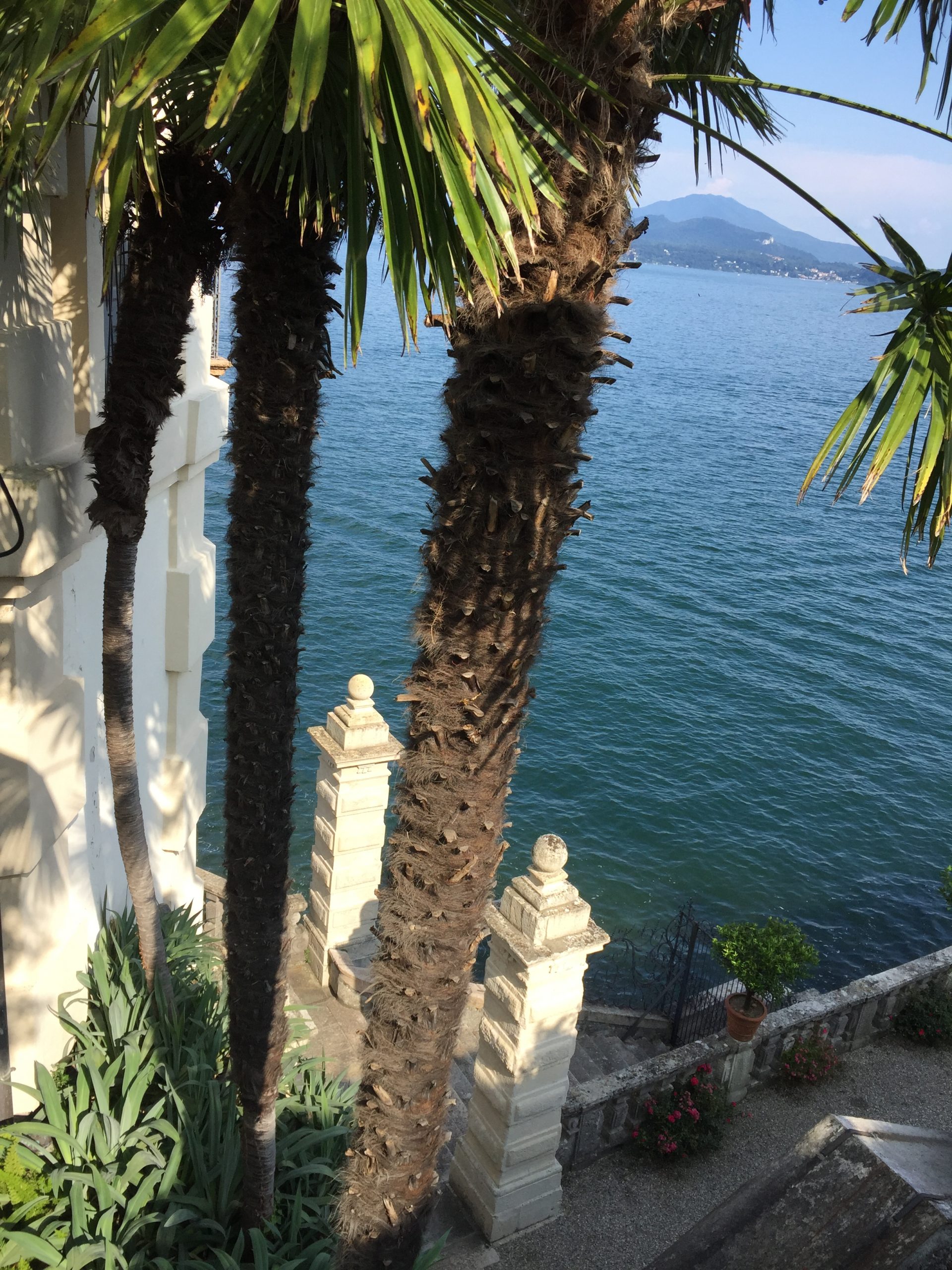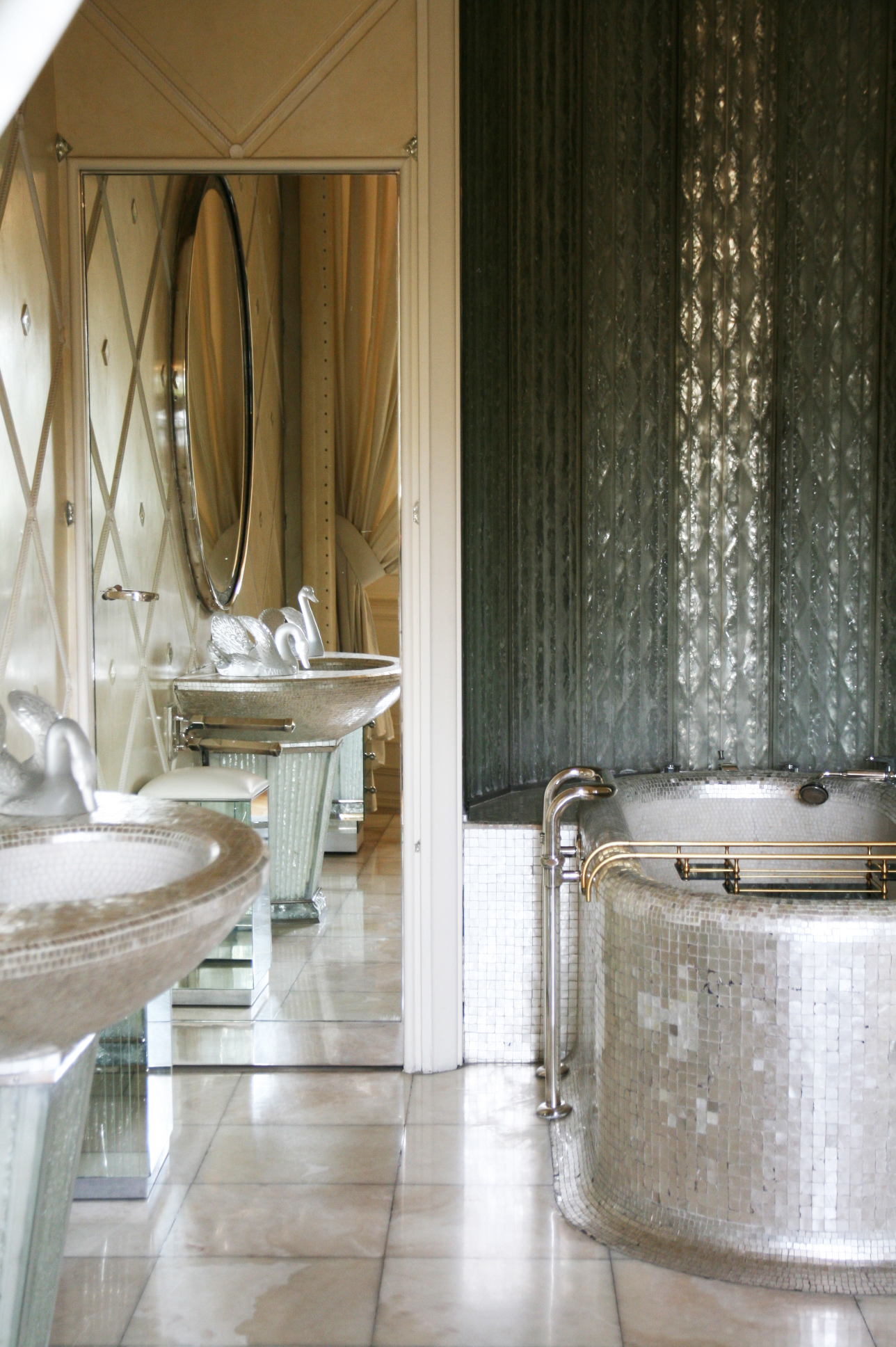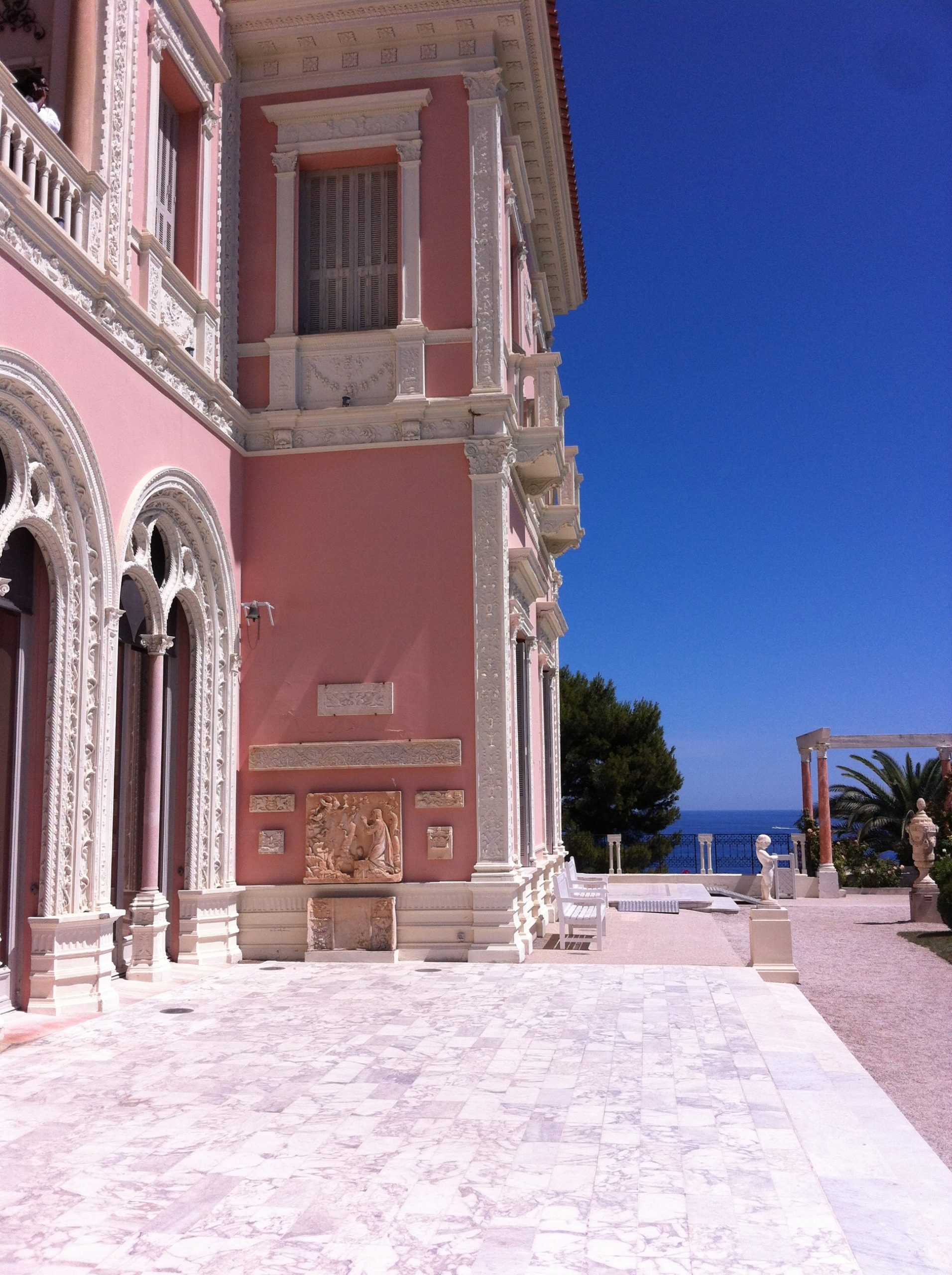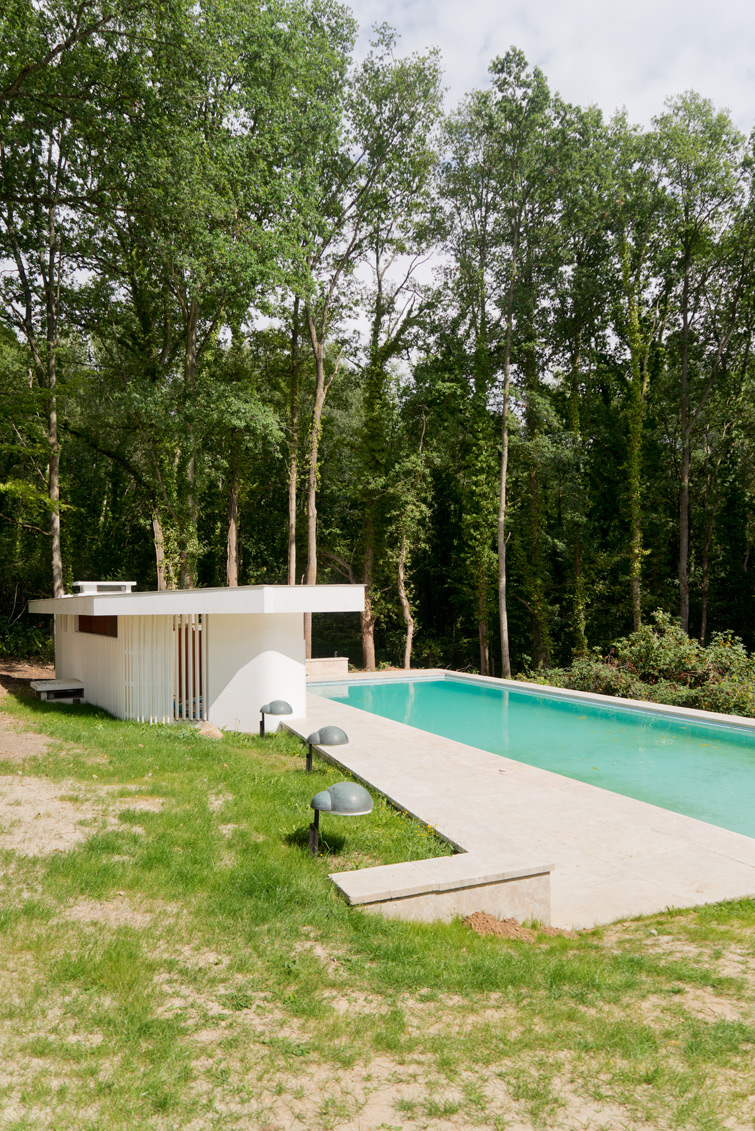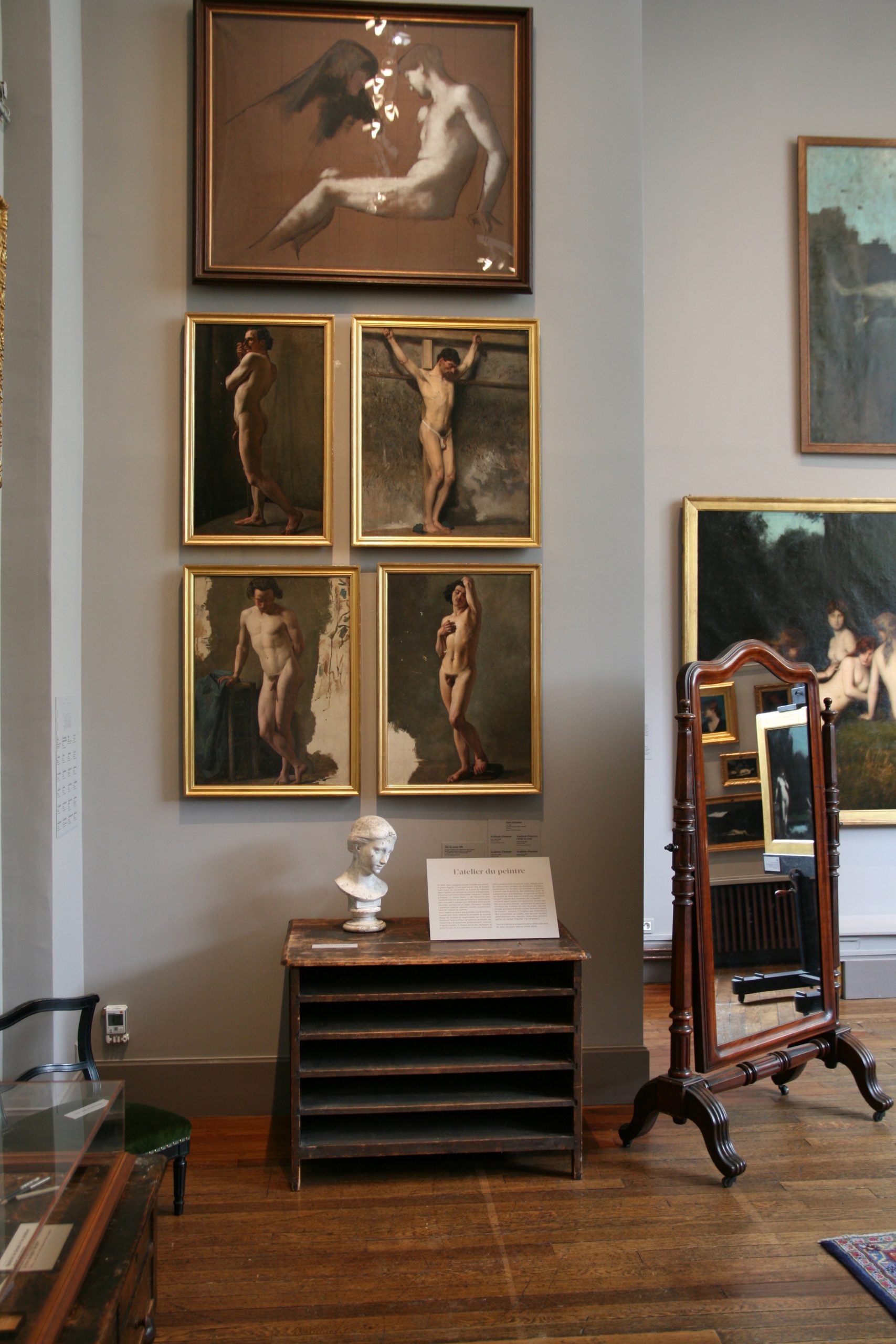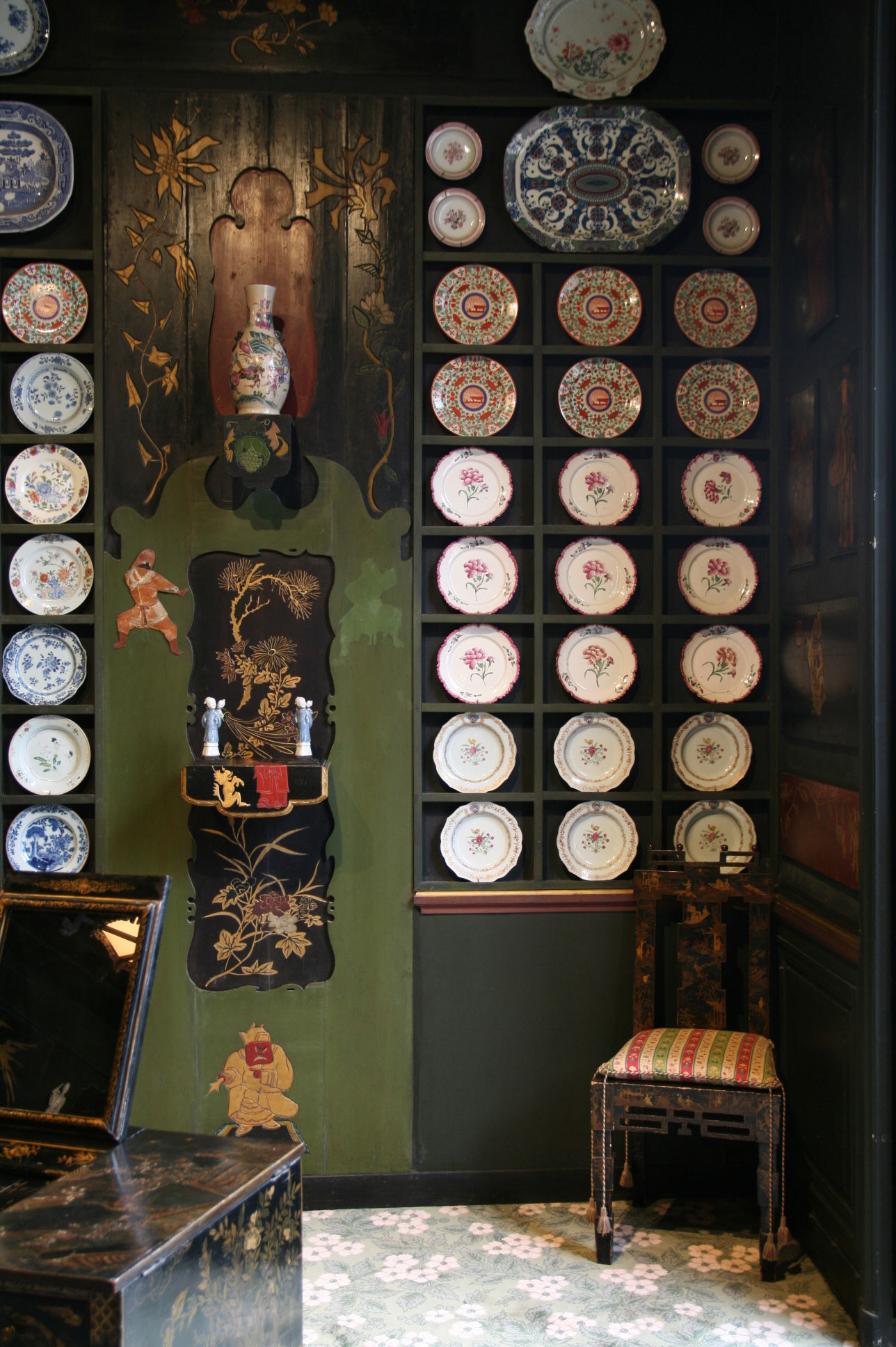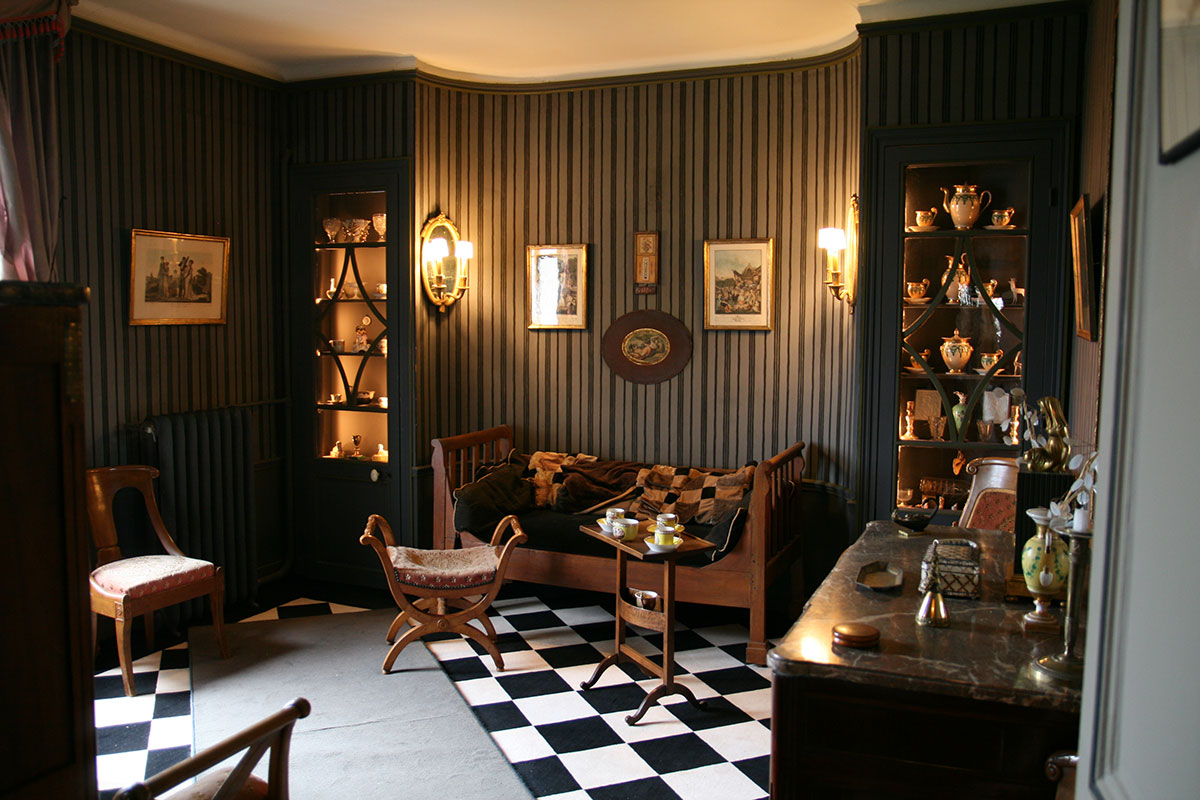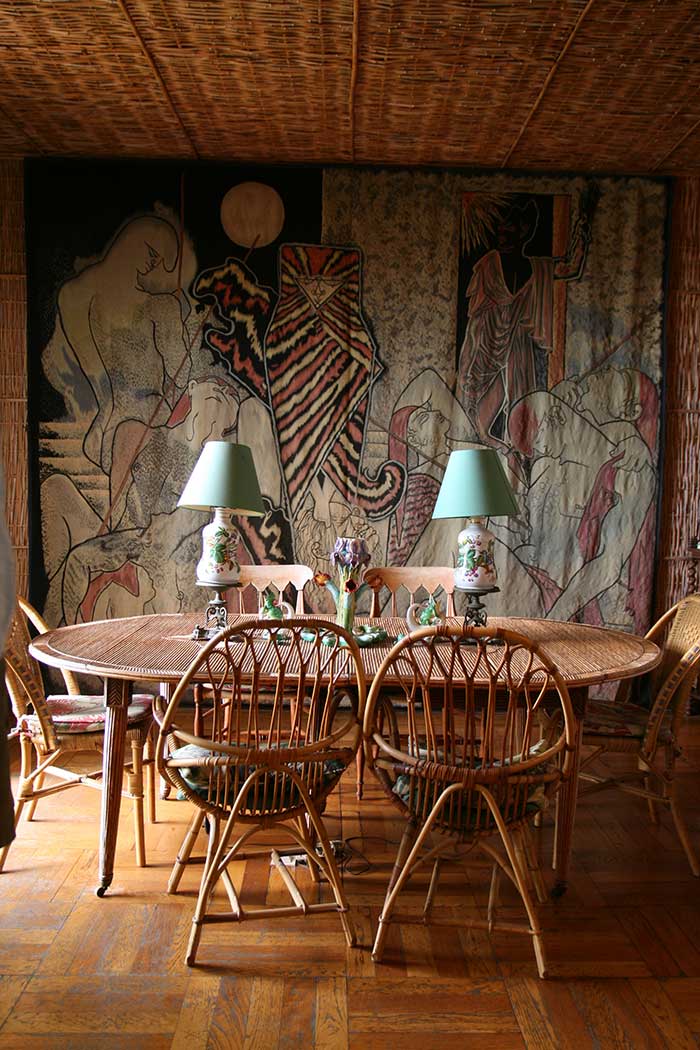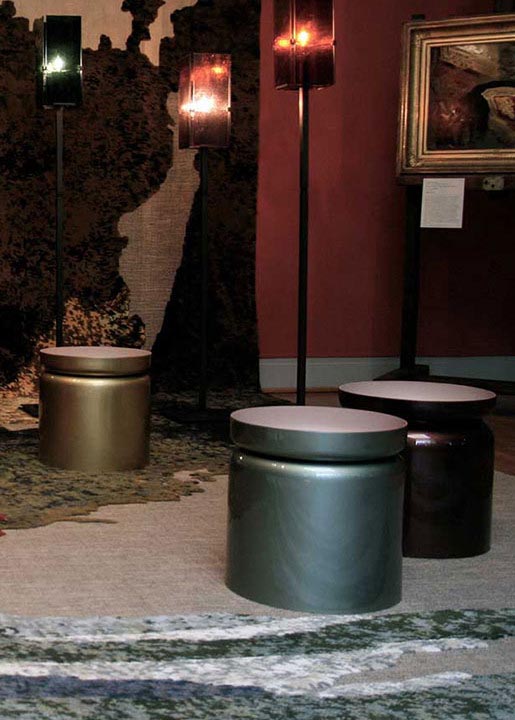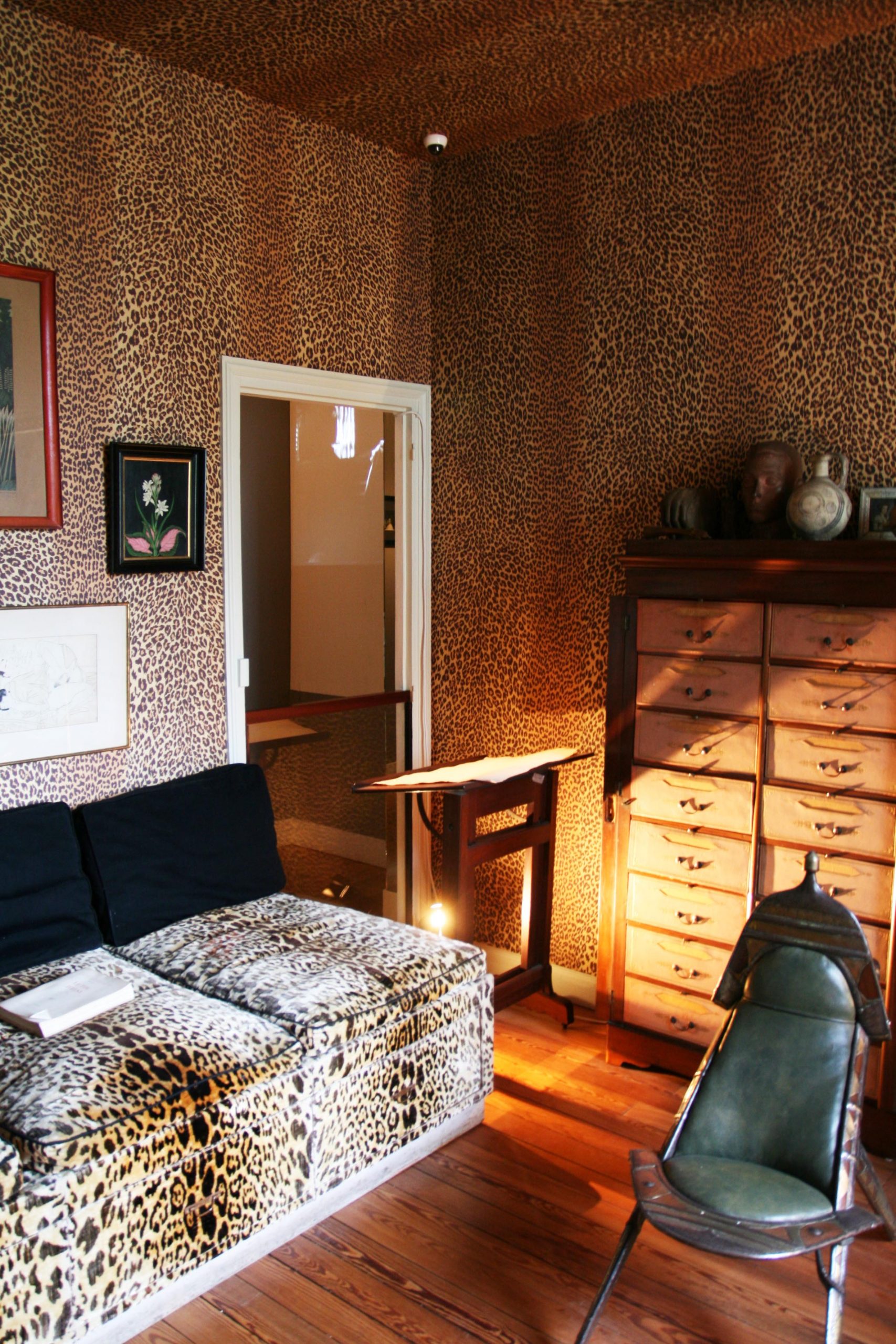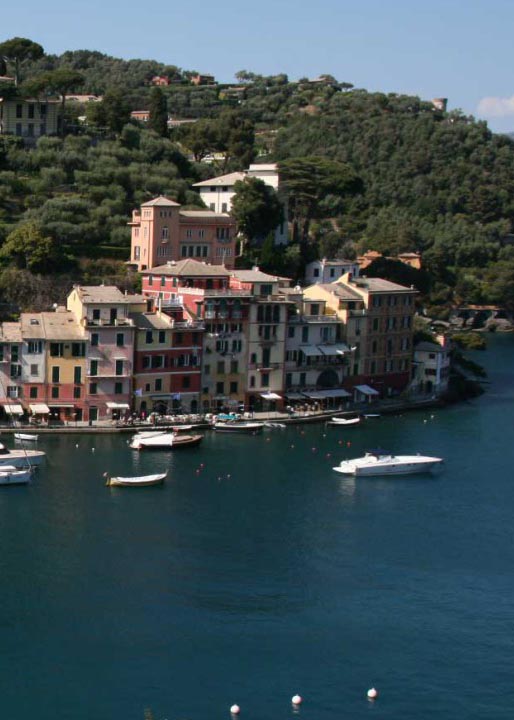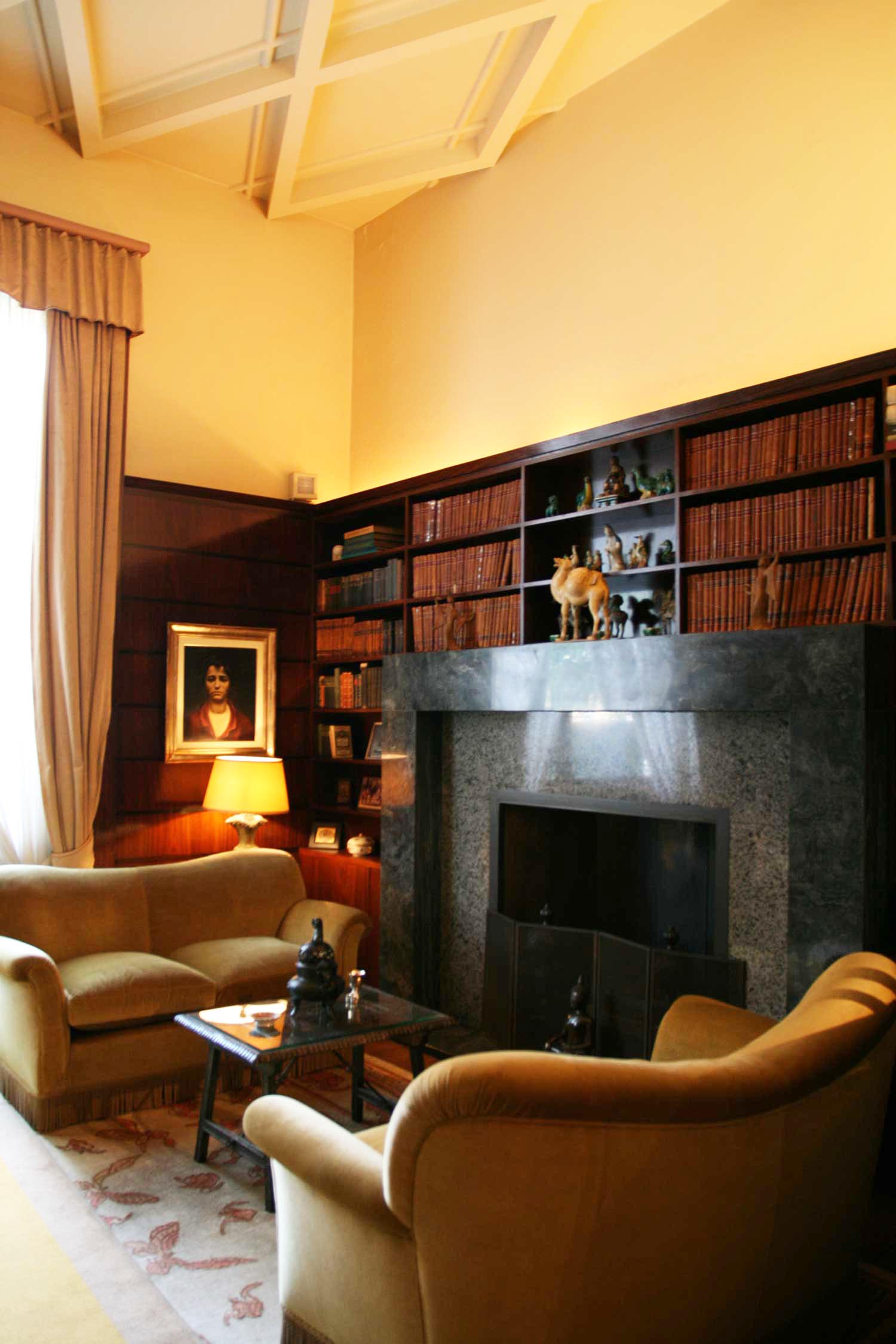MAISON LOUIS CARRÉ, ALVAR AALTO
The Maison Louis Carré is the only remaining building by Alvar Aalto in France. It is first and foremost a home built for the needs of his client, Louis Carré.
Louis Carré, a lawyer, took over his family antiques business in the 1920s, moving into primitive and then modern art in the 1930s. He exhibited the works of Le Corbusier, Matisse, Dufy, Rouault, Vuillard and Jacques Villon at his gallery in avenue de Messine in Paris. Louis Carré lived in the apartment building designed by Le Corbusier in Paris’ sixteenth arrondissement, before moving to Brussels in the 1950s. On his return visits from Brussels, Carré would stay in Jean Monnet’s thatched cottage in Bazoches, a rural village 35 minutes west of Paris. It was Jean Monnet who advised him to purchase the fields across the road from him. Louis Carré wrote to Alvar Aalto and met him at the Venice Biennale in 1956 where Aalto opened his Finnish pavilion. Aalto and Carré were of the same generation and shared the same idea of art.
Louis Carré gave Alver Aalto carte blanche, his only requests being for a house that would be large inside but not appear so from the outside and for a sloping roof rather than a flat one. The house was designed as a space that would combine both public life – where Louis Carré could organise art viewings and entertain guests – and private life.
The Maison Louis Carré is striking in that it is a total work of art, perfectly integrated into its surroundings. Everything in the house and garden, from furniture and lighting to door handles and drains, was designed by Alvar Aalto. Louis Carré and his wife Olga arrived with only their clothes, books and works of art, leaving behind all their previous belongings.
The main entrance features a large wall for displaying art and a ceiling curved in the shape of a wave, in red pine from Finland. The window is north-facing, to avoid projecting direct sunlight onto the paintings.
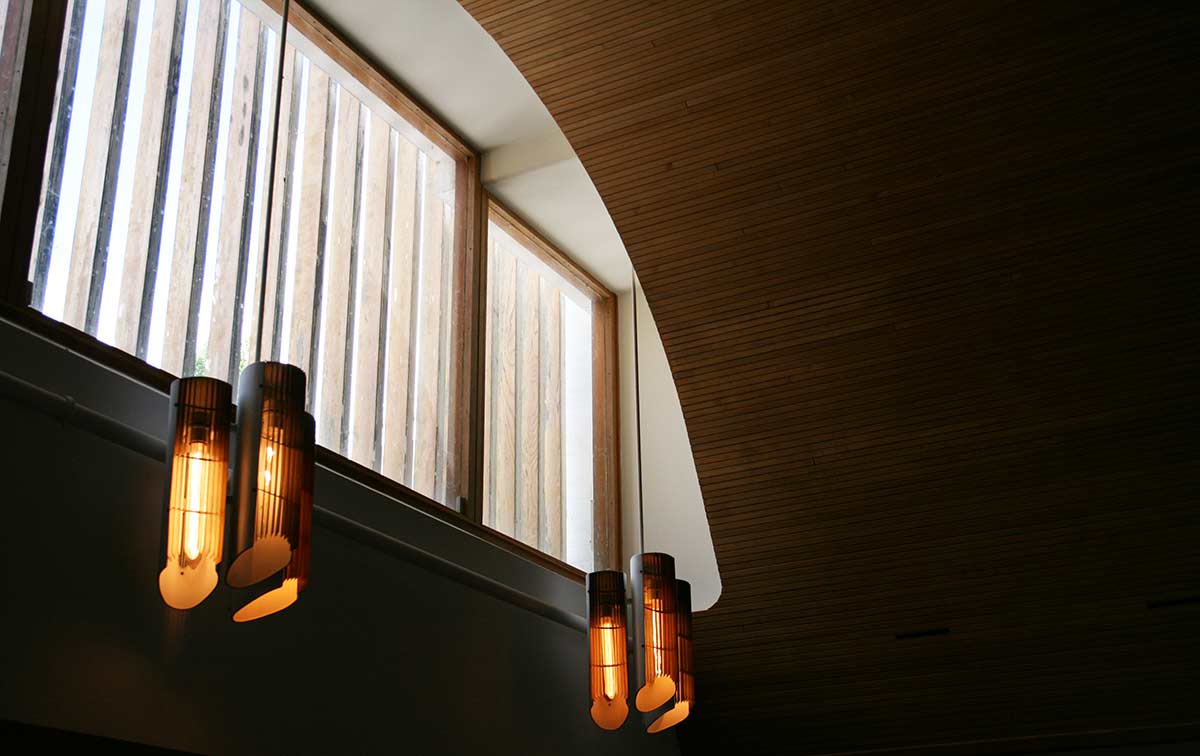
A wide flight of stairs leads down into the living area. The depth of the stairs was calculated to match those in the Chateau de Versailles.

A door on the right leads into a small library / study. The radiator is elegantly recessed into the wall.
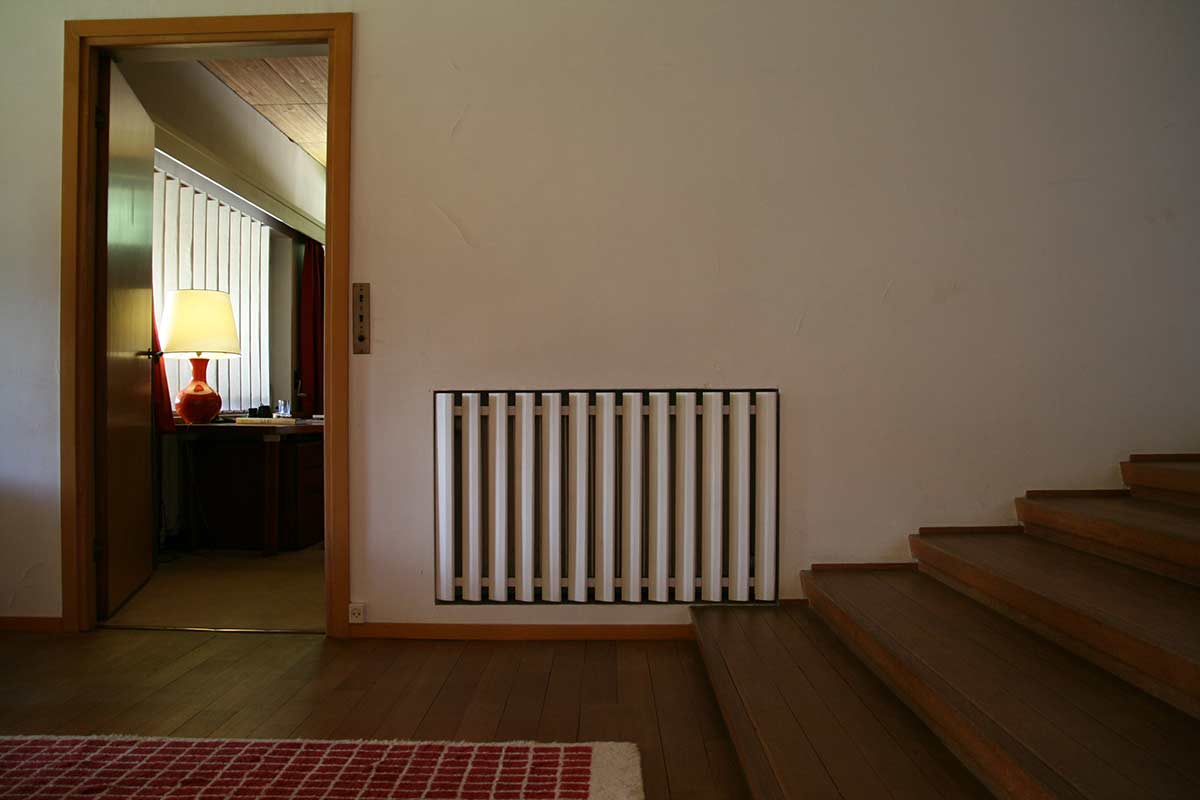
The lighting in Maison Louis Carré is carefully thought out to light specific areas, Alvar Aalto being more interested in the differences of lighting between series of spaces than in providing a general all-encompassing light.
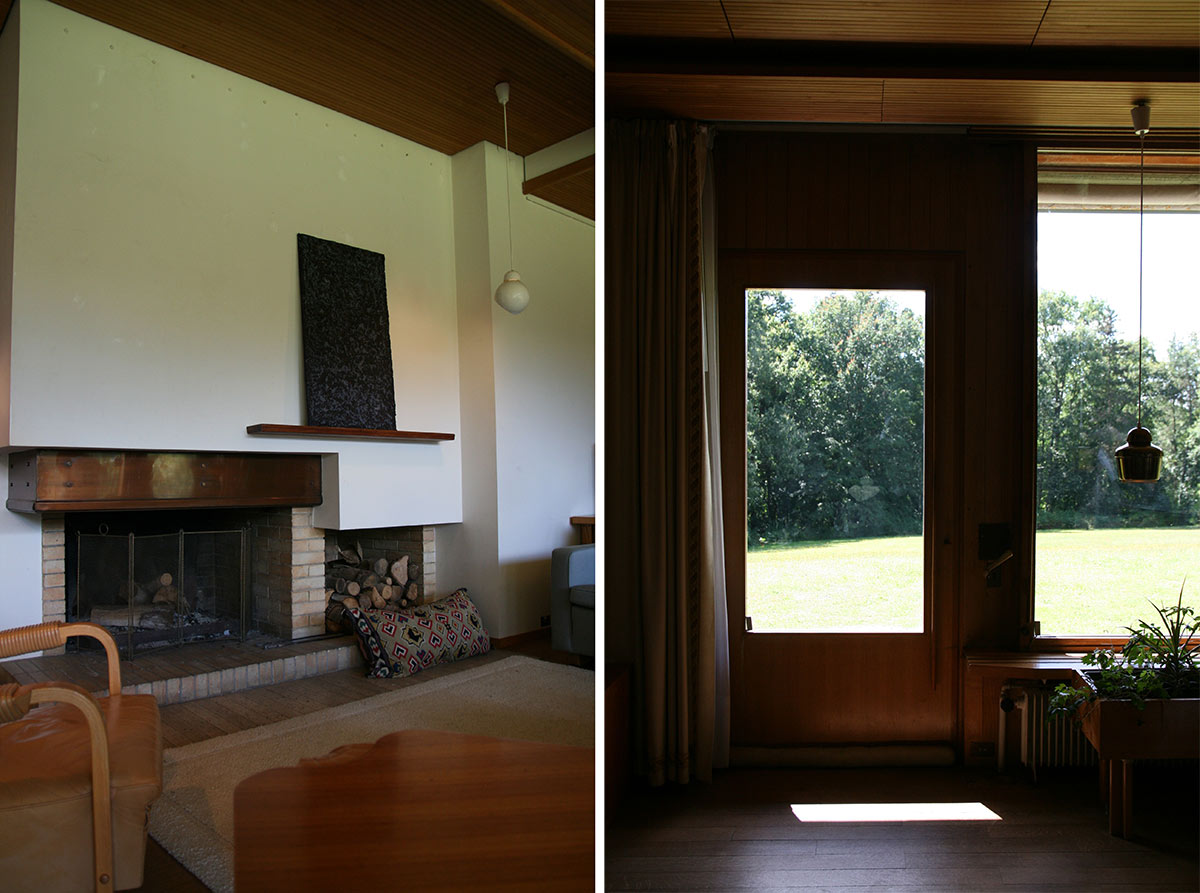
The pendant lights are often arranged in groups of three. Below are two A338 pendants (still in production today through Artek), part of a set of three, lighting the books on the far wall of the library.
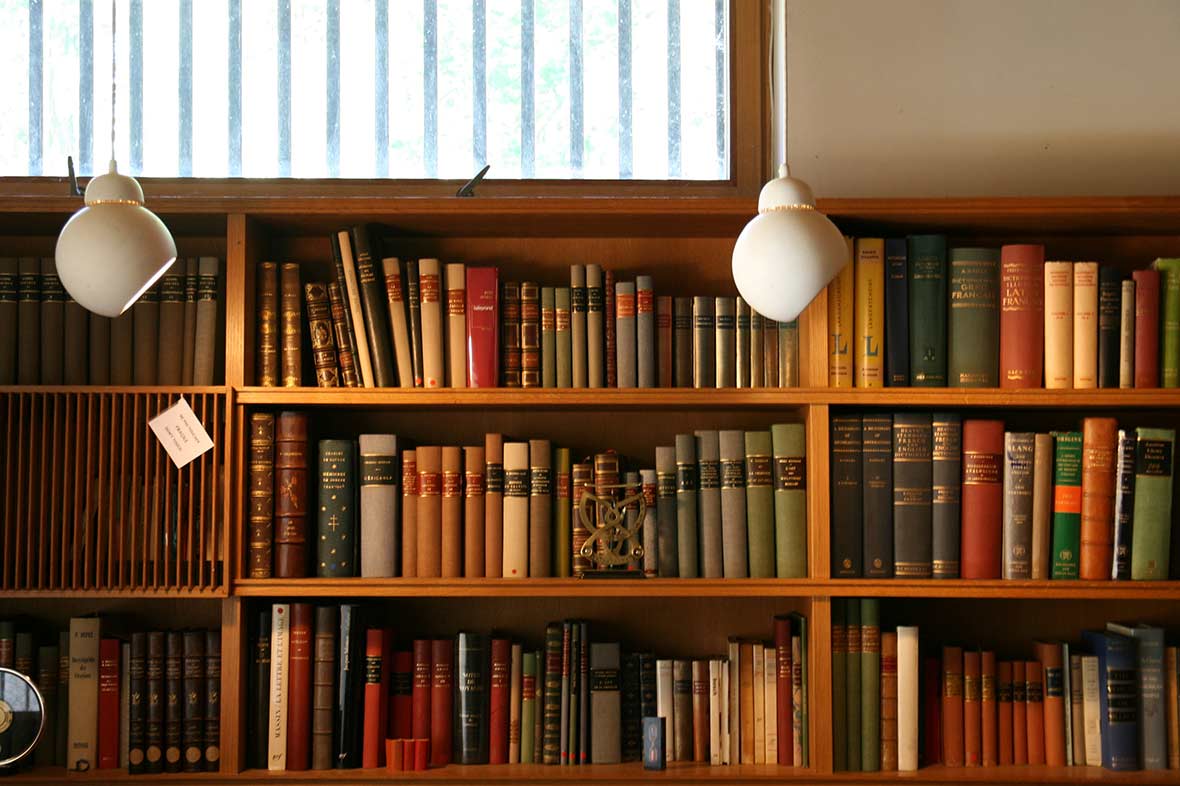
In the dining room, Aalto places three pendant lights within the skylight, thus providing the same angle of daylight and artificial light. As well as providing a diffuse light, the asymmetrical pendants also project light on the artworks displayed on the wall behind.
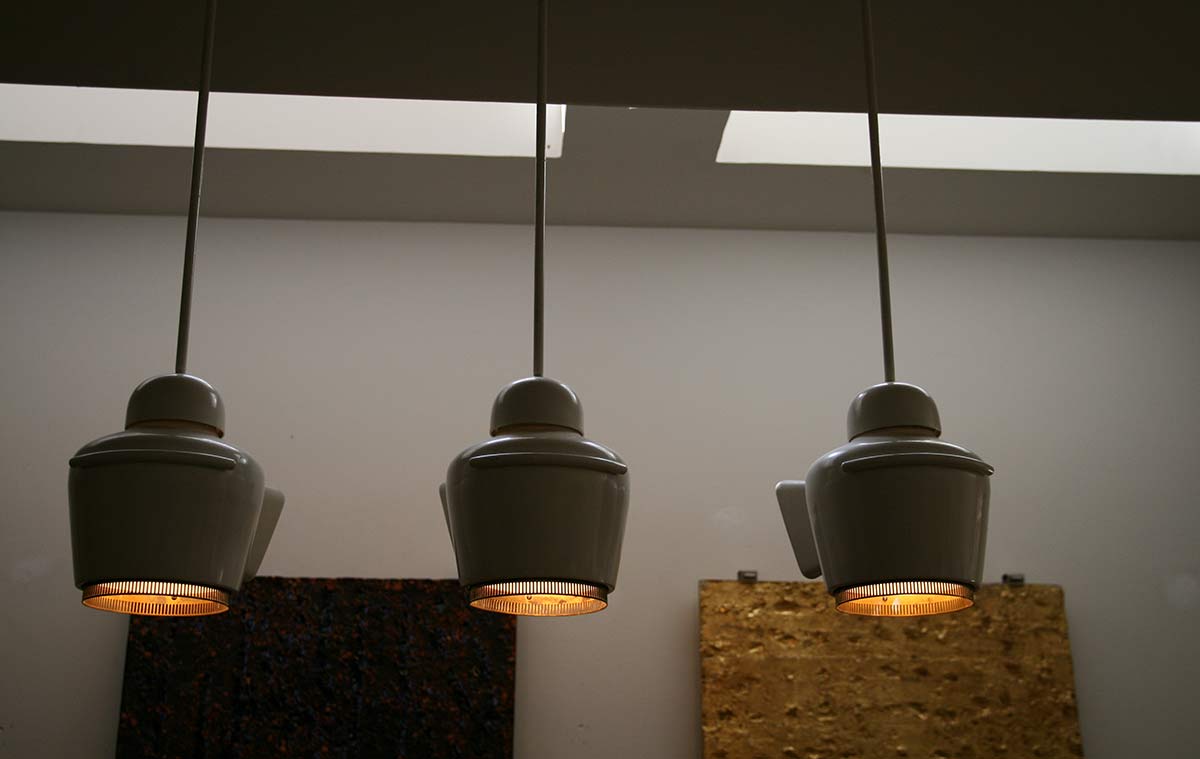
The same pendant lights, now in a group of five, are used over the dining table.

The bedrooms are lit by a combination of wall lamps and pendants. The A333 pendant is available through Artek.
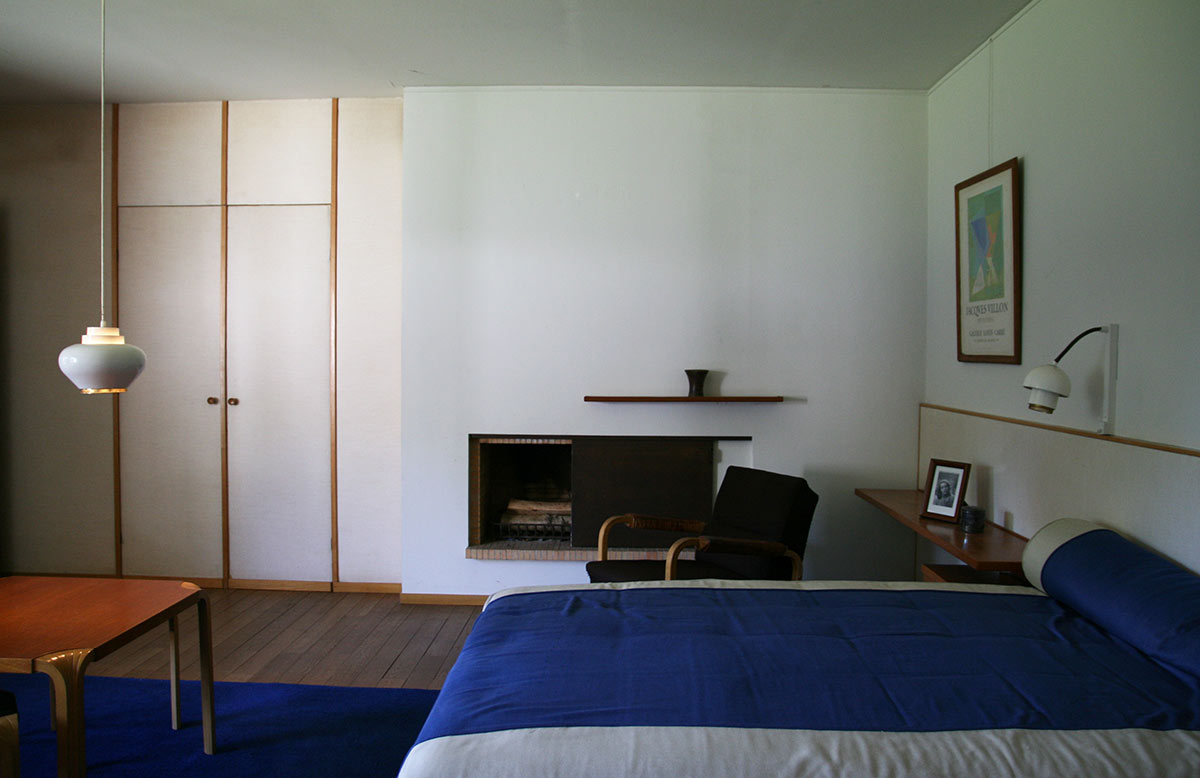
Leather-wrapped door handles were one of Alvar Aalto’s methods of offering a welcome touch (for Aalto, grasping a door handle was akin to shaking hands with a building).
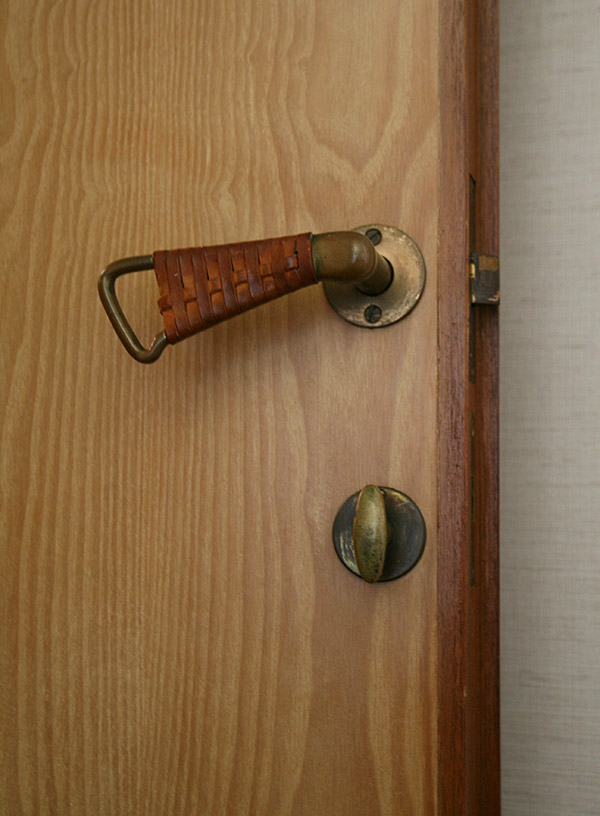
Louis Carré’s bathroom and sauna.
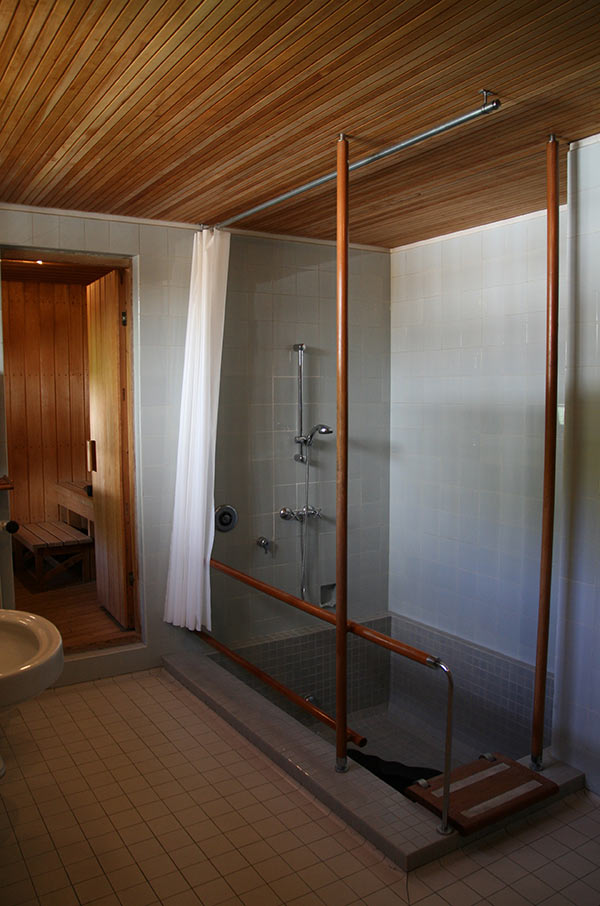
Each bathroom has direct access to the garden, enabling the inhabitants to enjoy a private terrace and the cleaning staff to access the bathrooms without going through the house.
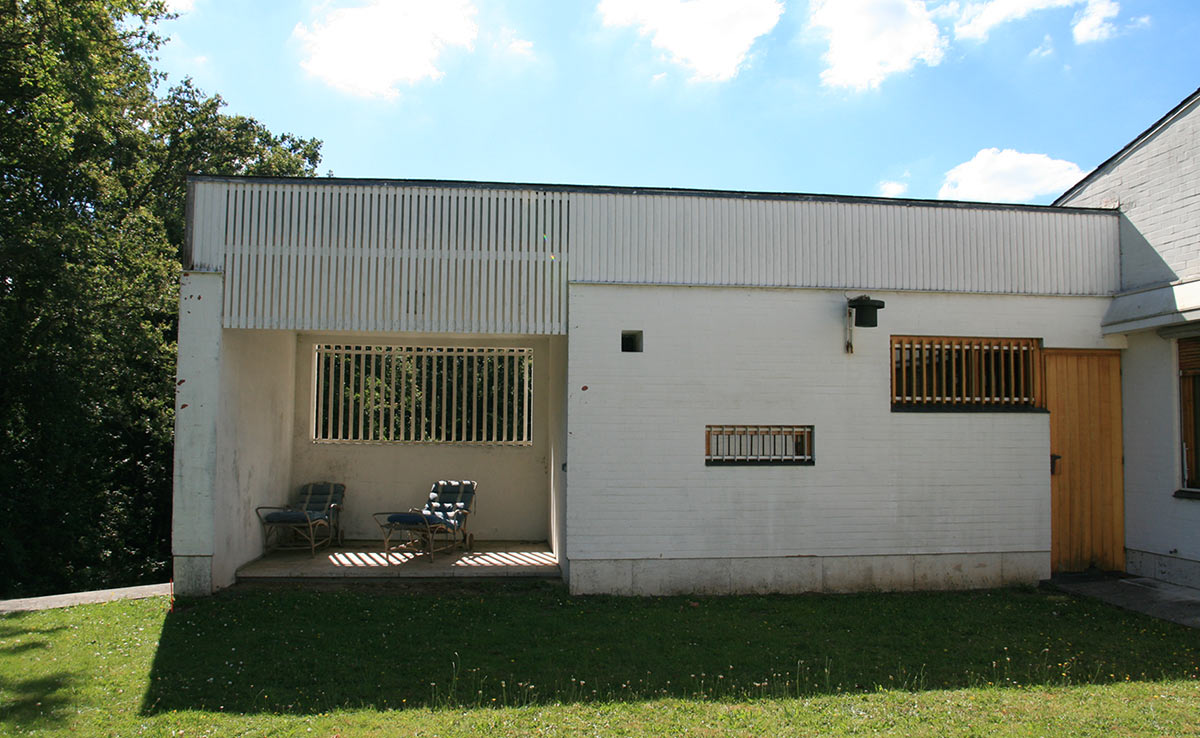
The same level of detail went into the highly functional kitchen. The window above the sink is placed at a higher level, to avoid water being projected onto it.
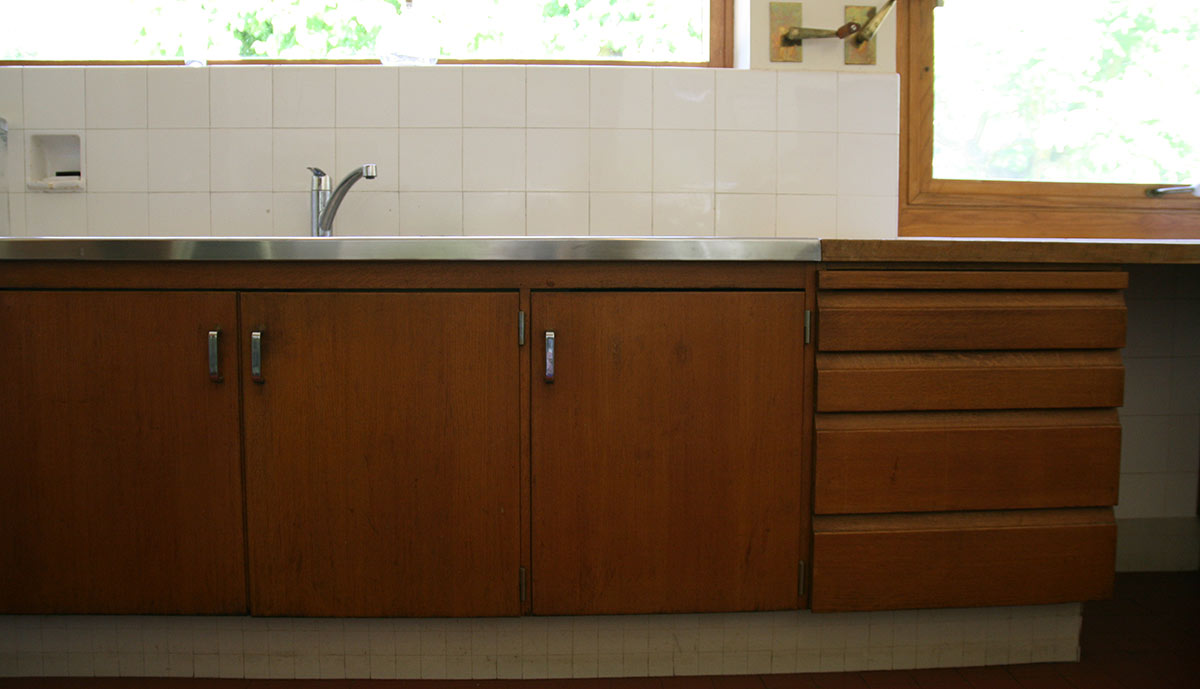
Three different worksurfaces are used, for the preparing of different types of food : marble, wood and stainless steel.
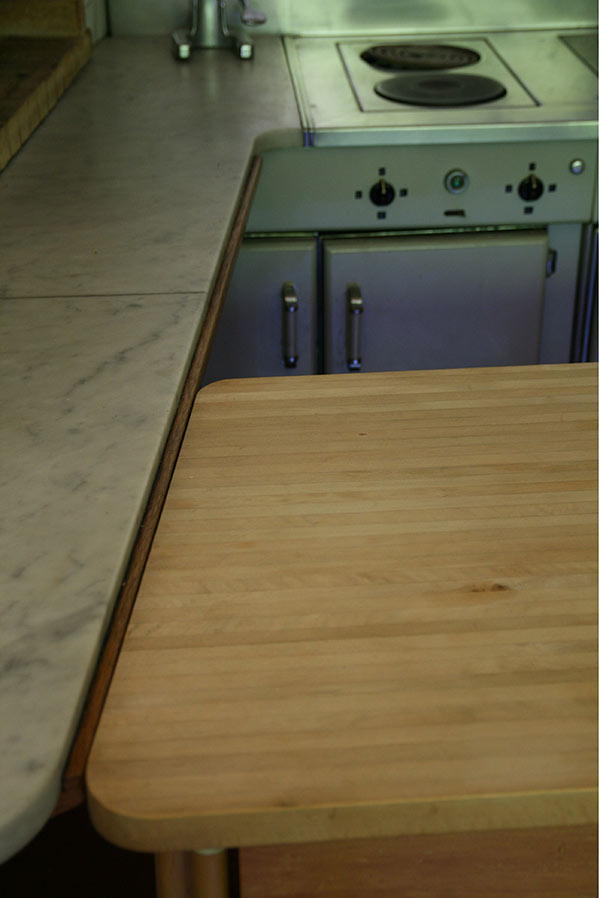
The outdoor areas – garden, swimming pool, garage, entrance gate – were likewise designed by Alvar Aalto. In Aalto’s own words “The generous preparation of the land opened up incredible possibilities and allowed an unprecedented freedom to create an architectural whole: the house and the landscape together in one design”(letter to Will Grohmann, 10/08/1966).
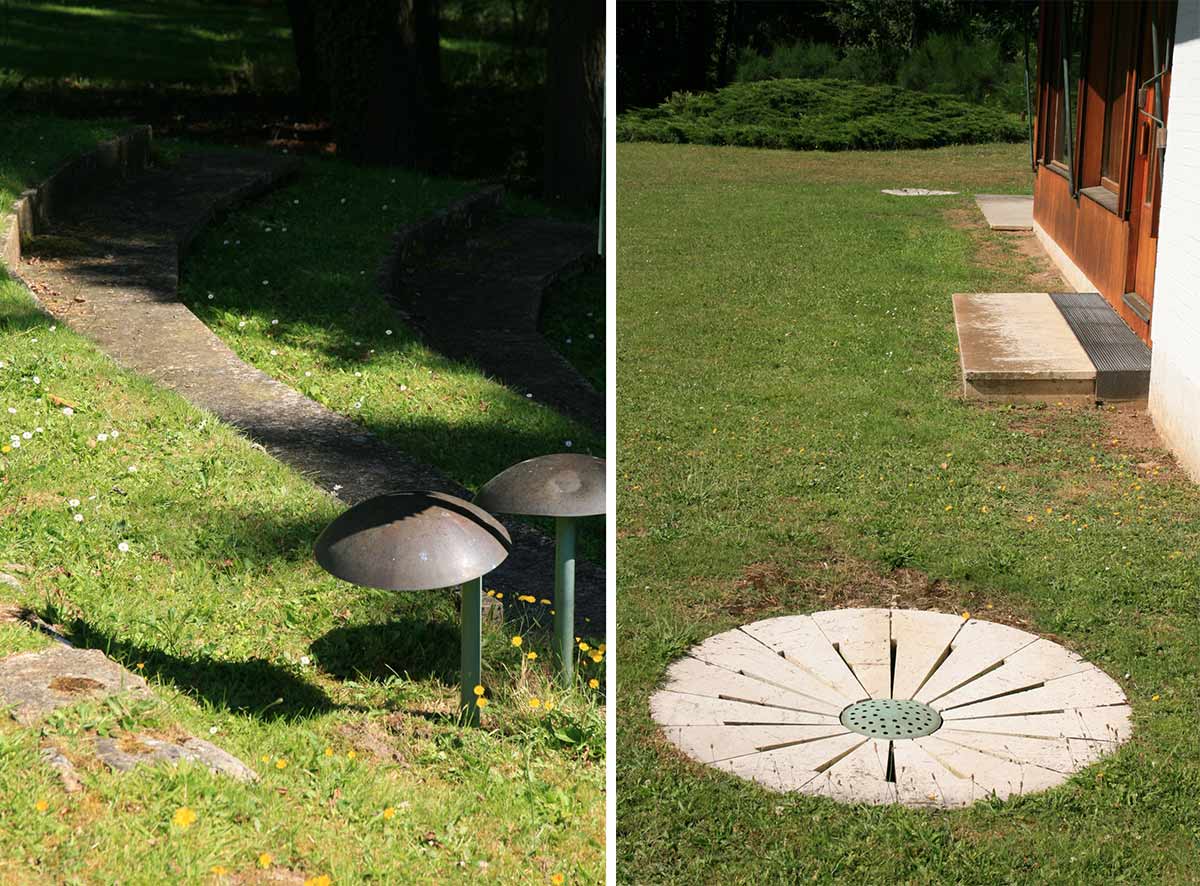
The steps leading down to the pool. The pool is currently being renovated by the Alvar Aalto Association.
